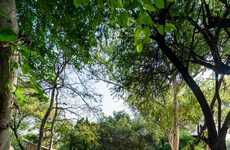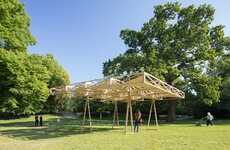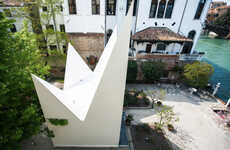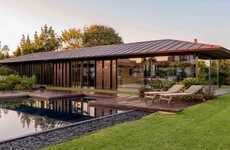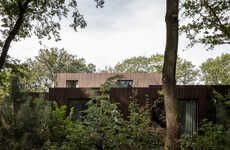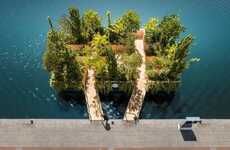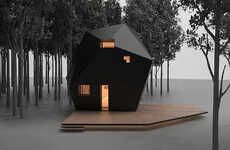The Rural Bamboo Pavilion by LIN Architecture Promotes Socialization
Elena Rahman — November 4, 2021 — Art & Design
References: lin-a & yankodesign
The Bamboo Pavilion was designed by LIN Architecture. It is located in the grassy rural landscape of Chongming and aims to foster a dynamic interactive socialization hub. It encourages visitors and residents alike to interact and connect after a long period of pandemic-induced social isolation.
LIN Architecture relied on one of the strongest available materials to create the Pavilion -- bamboo. During the day, the Pavilion reflects sunlight off its naturally glazed exterior. Once night settles in, it glimmers with golden light installed inside the enclosure, creating a lantern-like appearance. The Bamboo Pavilion boasts a flowing organic structural composition, creating an empty yet interactive space. With the help of designers and students from across the globe, LIN Architecture realized its social hub vision.
Image Credit: LIN Architecture
LIN Architecture relied on one of the strongest available materials to create the Pavilion -- bamboo. During the day, the Pavilion reflects sunlight off its naturally glazed exterior. Once night settles in, it glimmers with golden light installed inside the enclosure, creating a lantern-like appearance. The Bamboo Pavilion boasts a flowing organic structural composition, creating an empty yet interactive space. With the help of designers and students from across the globe, LIN Architecture realized its social hub vision.
Image Credit: LIN Architecture
Trend Themes
1. Socialization Pavilions - As the world emerges from pandemic-induced social isolation, there is an opportunity to design interactive pavilions that promote socialization and connection.
2. Bamboo Architecture - Using bamboo as a construction material has many benefits such as being environmentally sustainable and inexpensive, making it an ideal choice for innovators in the architecture industry.
3. Interactive Design Collaboration - Collaborations between global designers and students can lead to innovative and interactive design solutions that can create unique social spaces.
Industry Implications
1. Architecture - The use of bamboo in pavilion design offers a more sustainable and cost-effective way of designing spaces that are both functional and aesthetically pleasing.
2. Tourism - Socialization pavilions can serve as tourism destinations for post-pandemic travelers who are seeking unique experiences and opportunities to connect with locals and other tourists.
3. Education - Collaborative design projects in education can lead to innovative solutions that can serve various industries and promote sustainability and socialization in communities.
4.2
Score
Popularity
Activity
Freshness
